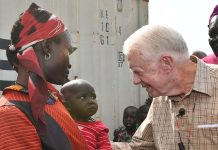What Percentage of Native Americans are Eligible for Benefits
Native Americans have a rich cultural heritage and a unique status within the United States. Many individuals belonging to Native American tribes are eligible for various benefits and programs provided by the government. In this article, we will explore the topic of what percentage of Native Americans are eligible for benefits and delve into the details of these programs.
Understanding Native American Benefits
Native American benefits encompass a range of programs designed to support tribal members in various aspects of their lives. These benefits include healthcare, education, housing, and financial assistance. Eligibility for these programs depends on factors such as tribal affiliation, blood quantum, and residency.
Factors Affecting Eligibility
Tribal Affiliation: Each Native American tribe has its own set of rules and requirements for membership. To be eligible for tribal benefits, an individual must be recognized as a member of a specific tribe.
Blood Quantum: Blood quantum refers to the degree of Native American ancestry an individual possesses. Different tribes have varying blood quantum requirements for enrollment and eligibility for benefits. For example, some tribes may require a minimum blood quantum of 1/4 while others may have different thresholds.
Residency: Some benefits programs may require individuals to reside within a specific tribal jurisdiction or geographic area to be eligible for assistance.
Percentage of Native Americans Eligible for Benefits
Estimating the exact percentage of Native Americans eligible for benefits can be challenging due to the varying criteria set by different tribes and programs. However, it is estimated that a significant portion of Native Americans are eligible for some form of assistance.
Healthcare Benefits
The Indian Health Service (IHS) provides healthcare services to eligible Native Americans and Alaska Natives. According to the IHS, approximately 2.6 million individuals are eligible for their services. This represents a substantial percentage of the Native American population.
Educational Benefits
Native American students can access educational benefits such as scholarships, grants, and tuition waivers. The exact percentage of eligible students varies depending on factors such as tribal affiliation, residency, and academic achievements. However, numerous programs exist to support Native American students in pursuing higher education.
Housing Benefits
The Department of Housing and Urban Development (HUD) offers housing assistance programs for Native Americans, including rental assistance and homeownership opportunities. The percentage of eligible individuals depends on factors such as income, tribal affiliation, and residency.
Financial Assistance
Various financial assistance programs are available to Native Americans, such as Temporary Assistance for Needy Families (TANF) and the Low-Income Home Energy Assistance Program (LIHEAP). The percentage of eligible individuals varies based on income, family size, and other criteria.

Native Americans have access to a range of benefits and programs aimed at supporting their well-being. While estimating the exact percentage of eligible individuals can be challenging, it is evident that a significant portion of Native Americans qualify for various forms of assistance. Understanding the specific requirements and criteria set by each program and tribe is crucial for accessing these benefits.
Frequently Asked Questions – Native American Benefits
1. What percent of Native American heritage is required to qualify for benefits?
According to the federal government, individuals must have at least 25% Native American blood quantum to be eligible for most tribal benefits.
2. Are there any benefits available for individuals with less than 25% Native American heritage?
Yes, some tribes have specific programs or services that extend benefits to individuals with less than 25% Native American heritage. It is advisable to contact the respective tribal authorities for more information.
3. How can I prove my Native American heritage?
Proof of Native American heritage typically requires documentation such as birth certificates, tribal enrollment cards, or genealogical records. Each tribe may have specific requirements, so it is best to consult with the respective tribal authorities.
4. What types of benefits are available for Native Americans?
Native Americans may be eligible for a range of benefits, including healthcare services, education grants, housing assistance, job training programs, and cultural preservation initiatives.
5. Do all Native Americans automatically receive benefits?
No, not all Native Americans automatically receive benefits. Eligibility for benefits is determined by tribal enrollment, blood quantum, and other specific requirements set by each tribe.
6. Can individuals from federally recognized tribes receive benefits?
Yes, individuals from federally recognized tribes are generally eligible for various benefits. However, specific eligibility criteria may vary between tribes.
7. Are Native American benefits available to individuals living outside tribal reservations?
Yes, Native American benefits are not limited to individuals living within tribal reservations. Many programs extend benefits to Native Americans living in urban areas as well.
8. Can non-Native American spouses or children of Native Americans receive benefits?
Some benefits may be extended to non-Native American spouses or children of Native Americans, depending on tribal policies. It is advisable to consult with the respective tribe for more information.
9. Can I receive benefits from multiple tribes if I have heritage from different tribes?
In some cases, individuals with heritage from multiple tribes may be eligible for benefits from each respective tribe. However, eligibility criteria and benefits may vary, so it is important to consult with each tribe separately.
10. Can individuals with Native American heritage from other countries receive benefits?
Native American benefits are generally specific to tribes within the United States. Individuals with Native American heritage from other countries may not be eligible for these benefits, but they should explore any potential programs or services available in their respective countries.




